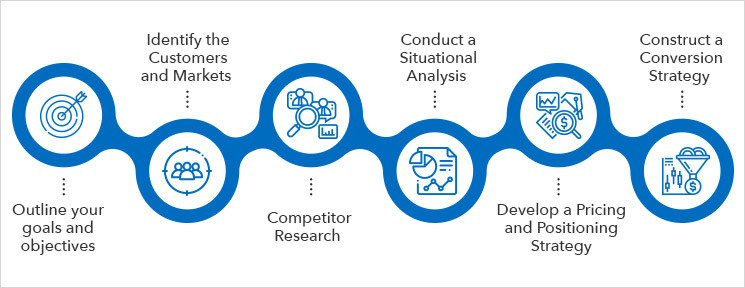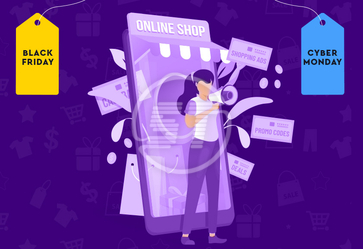Ecommerce has become vital for businesses, with digital shopping reaching unprecedented heights in recent years. As billions of people shop online, businesses are working to bring products directly to customers' fingertips. However, fierce competition makes it challenging to navigate this space without a solid strategy.
The key to success lies in crafting an effective ecommerce digital marketing strategy for your ecommerce website. With countless strategies available, it can be overwhelming to know where to begin. That’s where we step in. Our expertise helps you develop a tailored ecommerce digital marketing strategy that aligns with your business goals. We guide you through essential tactics like search engine optimization (SEO), pay-per-click (PPC) advertising, social media marketing, and email campaigns. By implementing these strategies, we ensure your ecommerce website not only attracts potential customers but also converts them into loyal buyers. Trust us to refine your approach and elevate your online presence, driving growth and success in the competitive ecommerce landscape.
How to Develop an Ecommerce Digital Marketing Strategy?
“An hour of planning can save you 10 hours of doing” goes the adage and hence we emphasize more on planning in the direction to drive better results for your business. So, let’s see how to develop an ecommerce marketing plan.

Outline your goals and objectives
Set the stage for your products and paint a broad picture of your marketing strategies. What are you trying to accomplish is the primary question you need to pose to yourself? Don’t focus on how to get it. We are not yet there. Just identify the broad goals for having a granular view.
Outline your objectives -
- Boost Traffic to Your Site
- Increase Customer Base
- Expand Product lines
- Increase Business Revenue
Identify the Customers and Markets
Define your target market and build customer personas to target better. You can identify your ideal customers and profit-making markets to make your ecommerce marketing efforts fruitful. You can also identify the customer pain points and focus on reducing the friction. You can send out surveys to know the customers better. Also, use the key demographics like age, gender, location, job, income, marital status, buying behaviour, social preferences, and interests.
Competitor Research
Know your key competitors, understand their strengths & weaknesses, and their strategies beforehand to outperform them and edge out in the competition. You can use tools like SEMrush, Ahrefs for competitor research and understand where their traffic is stemming from. Remember, it is an ongoing process as new competitors might sprout, or the old ones might have bettered their strategies, and more. Also, trends evolve and need to see how they are used by the competitors.
Conduct a Situational Analysis
Understand where your stand at the time of planning. Scrutinize different elements like what are your products, distribution channels, pricing, promotional strategies, services offered, the financial standing of the company, marketing expenses, sales strategy, and more. You can also focus on understanding the external elements like economic, social or cultural, technological, political, ethical, and legal elements.
Develop a Pricing and Positioning Strategy
Customers check for price comparison when they want to buy something. You don’t want to lose on the price wars. So detail the positioning you are looking for in the industry and focus on the pricing strategy. Depending on the distribution channel, competitor positioning, geography, you can adjust your pricing.
Construct a Conversion Strategy
You need to have a proper plan on what to do once your target customers land on your site. How do you plan on converting them into your customers? You can work on a landing page, improve your sales copy, high-quality product images, and customer testimonials to improve the visibility aspects of your website. You can also segment your customers and optimize the conversion channels for improved sales.
Ecommerce Digital Marketing Strategies
Once you are done with the initial steps, it’s time to dive in to know of the various options you have.
Search Engine Optimization (SEO)
SEO involves optimizing your eCommerce website to achieve higher rankings on search engine results pages (SERPs). A crucial aspect of SEO is keyword research, which helps elevate your site’s visibility. While SEO may not yield immediate results, it can drive a steady flow of organic traffic once your site begins to rank. Utilizing various SEO tools can simplify this process, allowing you to identify high-search-volume keywords and optimize elements affecting your search rankings.
For optimal results, focus on enhancing your product pages, category pages, and blog content. Incorporate high-volume search keywords into key areas such as URLs, titles, meta descriptions, and alt text. By leveraging comprehensive search engine optimization services, you can improve your website’s search engine performance, attract more visitors, and boost your eCommerce success.
Paid Advertising
Paid advertising is one of the most effective marketing strategies, prominent among them are Google Ads and Facebook Ads (part of Social Media Strategy). Through social media marketing, you can target users based on the demography and their interests. You can introduce your products to the right audience by quickly setting up an ad on social channels.
On the other hand, you can set up Google Ads based on target-specific keywords. When a user searches for a keyword or a phrase, your ad will appear on the top of search results even before the organic results. The chances of click-through-rate (CTR) would be high this way. This is one of the best ways to be right in front of the audience when they look for something related to your products and services.
As there are billions of shopping searches on Google every day, retailers need to gear up to capitalize on the benefits of this platform. You need to focus on getting discovered online. With Google Shopping one can go for free listings and also the merchants can connect better with the customers. You can have free exposure on Google and you can enjoy more and more products gaining visibility.
Social Media Marketing
Cash on the ubiquitous nature of your customers wherein a key demographic in the age group of 18 to 35 are on social media actively engaging with businesses for their consumer needs. It has become a key avenue for doing business not merely sharing platforms. Facebook, Instagram, Pinterest, are some of the most sought out channels by customers and businesses alike.

With over 2.5 billion active users, Facebook is still one of the best platforms to capture the attention of your potential customers. You get a host of information like their demographic and preferences, based on which you can target precisely. Instagram is another popular social media platform that can best be used for your ecommerce business. Just like Instagram, another image-driven platform is Pinterest where you can target based on the analytics data. You can create and promote pins that are gaining higher traction.
Content Marketing
Content Marketing involves multiple things but the essence is to create engaged and compelling content for your website to keep the customers’ interest alive. Some of the ways you can focus on are
- Blogging - An engaging piece of content that could be about the products, informative and educational content that customers look for would help you to gain customers’ trust. It also goes hand-in-hand with SEO which drives organic traffic to your ecommerce site. Blogs help your website for years to come by improving your SEO score.
- Product Guides - Product guides are great at converting customers who are looking for more information about the products before they make a purchasing decision. Having an effective call-to-action in every post will improve your conversion chances. You can include a click to buy the product or take their email for the newsletter subscription.
- User-generated Content - User-generated content like product reviews, customer testimonials are a perfect way to provide social proof for your business. It works instinctively on humans as they get to see fellow customers liking the products. You can have a separate landing page entirely dedicated to hearing the customers’ stories.
- Videos - Ecommerce business faces more skepticism when compared to the physical stores given the lack of touch-and-feel experience. For customers to have a better shopping experience, you can use video ads that help them to understand how the product works, product demos, and descriptions. You can also use these videos across a wider variety of platforms to distribute them among the target customers.
Email Marketing
Email Marketing is one of the best ways to nurture your customers through personalized campaigns and build relationships with them. A thoughtful and strategic email campaign can serve as a great nudge to push people into making a purchase decision. A newsletter is a way to build strong rapport and notify them about any current product promotions, offers, and sales. You can also rely on email marketing tools for engaging with potential customers and upsell to the existing ones.
There are a ton of strategies like using automated emails for welcome email series once the user opts-in, abandoned cart emails when they added an item but didn’t make a purchase, marketing emails about the promotions, offers, and more, newsletters about the product news, incentives, and upcoming promotions.
Referral Marketing

This is a word-of-mouth marketing tactic that helps you to grow your business’ customer base by spreading the word. It turns your current customers become your brand advocates. These word-of-mouth impressions are going to drive you 5x times more sales than the paid ones. Referrals have great conversion capacity and have a higher lifetime value than any other lead channel. These referrals turn your satisfied and happy customers reap more ROI by driving new customers. Make sure you have set up your brand message clear and succinct, build a community around it, and make the referral process easy by rewarding the purchasing behaviour.
Conclusion
There are various options like affiliate marketing, display ads, retargeting, Google Shopping, and more. With so many choices, it’s crucial to determine what works best for your business. An effective digital marketing strategy for ecommerce businesses takes time to develop. Consider a trial-and-error approach, where you test one strategy at a time to see how it performs. Continue refining this process until you discover the perfect plan that delivers the desired results for your business.
As a leading Digital marketing agency, we deliver brand strategy, UI/UX design & marketing techniques for your business. Leverage full-suite of digital marketing services for your ecommerce business to propel through your growth plateau, wow your audience, outpace your competition & achieve an incredible ROI. We also stay up to date on all the latest trends and best practices on these market giants to increase sales. Get in touch with us to find innovative solution!


